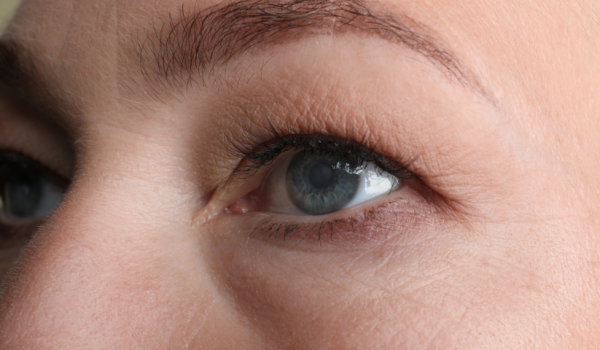When it comes to cataracts, some patients opt for surgery as a last resort – frustrated by the impact of vision loss on their daily lives. For Derek, a retired printer from England who now lives on the east coast of Australia, that couldn’t have been less true.
“To be honest with you, I thought my eyes were OK,” he says, laughing.
“I used to wear glasses for distance. When I was outside, or driving, things like that. But I never had to use them for reading or close work. Basically, I thought my vision was alright.”
As is often the case with cataracts, Derek, 71, only discovered that he actually had an issue with his eyes after making a routine appointment with his optician.
“I think the first time was over here in Australia,” he explains, speaking on the phone from his home near Sydney.
“I went in for a new pair of glasses and they went through the procedure of examining my eyes – and that was when they told me I had the beginning of cataracts.
“When we were over in England a while later to see family, I had an appointment with David at Anderson Eye Care and he confirmed it.”
Cataracts occur when proteins begin to clump on the lens of the eye, causing a frosting or clouding of vision. This most commonly happens with age: globally, cataracts are the biggest cause of vision loss in people over the age of 40. But other factors such as trauma, diabetes, steroid use and genetic predisposition can also play a role.
In the earliest stages, cataracts like Derek’s aren’t noticeable. With the passage of time, however, they become more prominent, frosting the lens by degrees until the vision damage becomes quite significant. Which leads to a choice: opt for intervention now, or when the cataracts start to have a perceptible impact on everyday life.
“I could wait until they became more of a problem, or I could have the surgery now while I was younger,” Derek agrees.
“With it being the eyes, I probably was a bit more nervous about it. I’ve gone through other surgery and it never really bothered me that much – but with my eyes, I was a bit more apprehensive.
“When I realised the cataracts would only get worse in later years, though, I just thought, OK, let’s do it. The opportunity was there to get them fixed, so I decided to go for it.”
Cataract surgery is the most common operation in the UK, and one of the most regularly performed medical procedures in the world. It works by replacing the eye’s natural lens with a new, artificial one (called an intra-ocular lens – or IOL for short).
Once an ophthalmologist has taken accurate measurements of the eye, the implanted IOL can correct for long or short sightedness and astigmatism. This brings a dual benefit: clear, cataract-free vision, without the need for spectacle correction at normal distance.
The procedure is usually performed with a local anaesthetic, though it can also be carried out with an optional sedative, or even under general anaesthetic if preferred.
If Derek was a little nervous prior to the operation, however, he did at least have someone to help him through it at close quarters: his wife Irene decided to have the procedure at exactly the same time, since she had also been diagnosed with early-stage cataracts (you can read more about her experience here).
Once in hospital on the day of surgery, Derek says he soon began to feel quite calm about the process.
“If I had a tip for people who are thinking about having the operation, it would be to stay relaxed about the whole thing – because everybody you come into contact with is very helpful and reassuring,” he explains.
“All the way through, the doctors and nurses are talking to you, asking you how you feel, reassuring you that everything’s OK.
“When we got to the hospital we were taken to a room where they put some anaesthetic drops in our eyes – they numb the area so you don’t feel anything. Then we were led into the theatre and had the procedure. It took about 20 minutes.
“Afterwards you ease yourself off the table into a wheelchair and they push you back to your room. Irene and I were given lunch, and after a few hours David came to see us and reassure us that everything was OK and that we were allowed to go home.”
Cataract surgery is usually performed one eye at a time, with a week or less between procedures. “You’re given a clear plastic patch that stays on for 24 hours – and again at night-time, so that you don’t poke yourself in the eye while sleeping,” Derek adds.
“The vision doesn’t feel noticeably clearer at the very start. It takes a couple of days for the clarity to come back. But when it does, you really notice it.”
Back home after the second operation, Derek remembers the first time he became aware of his new vision and how much it had changed for the better.
“I was upstairs and I just happened to look down at the river that runs past the house – and I couldn’t believe it! I didn’t have my glasses on, yet I suddenly realised I was watching the fish swimming around in the stream…”
For someone who classified his eyesight as ‘OK’ just a few months earlier, it was quite a revelation.
“It’s amazing,” he smiles. “I’ve had no problems since I had the surgery. For better vision, I’d recommend it to anyone.”
If you are interested in learning more about Cataract and Refractive Lens Exchange at Anderson Eye Care, you can find plenty of helpful information on our website. Click here for a guide to the procedure, and learn about the nine greatest myths of cataract surgery in this blog post.
Test drive the Zeiss Vision Simulation Tool here.
Medical Disclaimer
This article is for information purposes only and should not be considered medical advice. If you or any other person has a medical concern, you should consult with your health care provider or seek other professional medical treatment. Never disregard professional medical advice or delay in seeking it because of something that you have read on this blog, website or in any linked materials.







